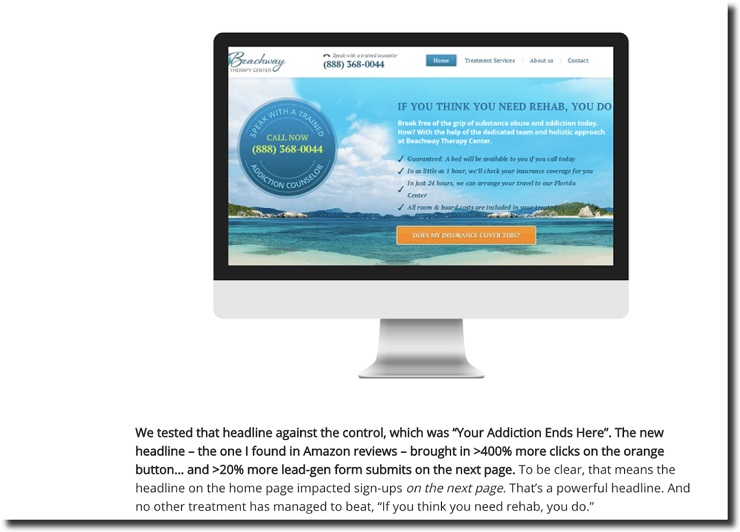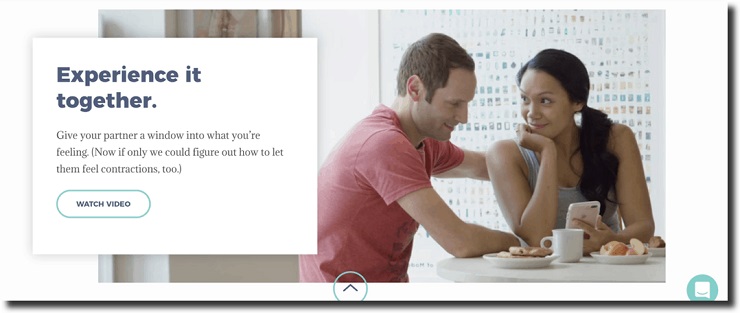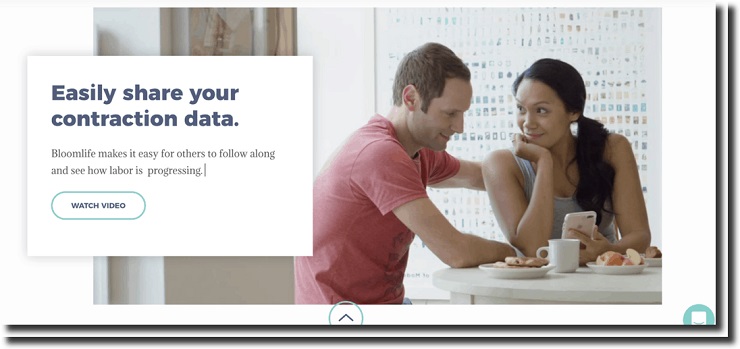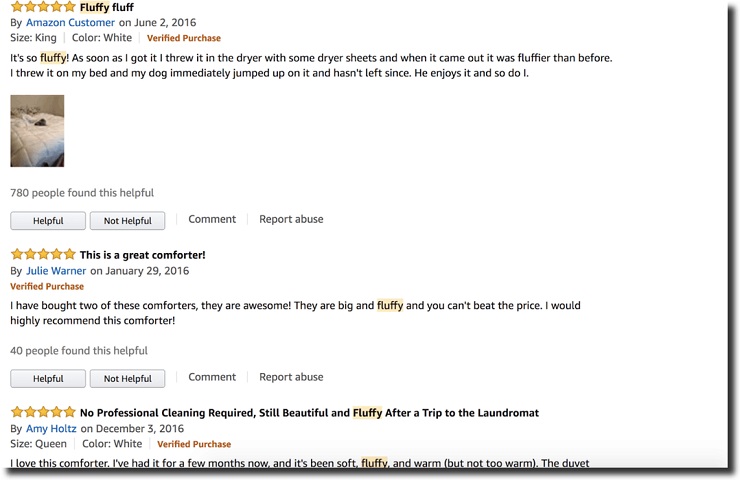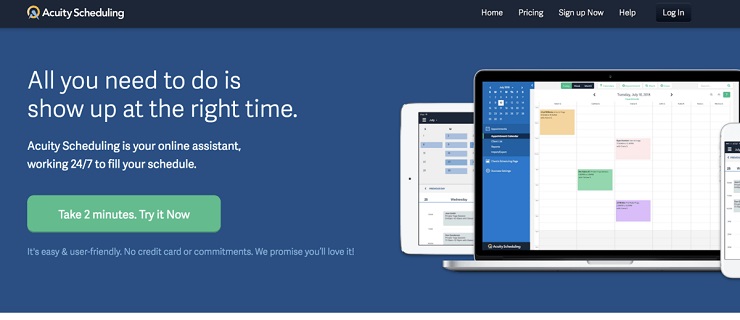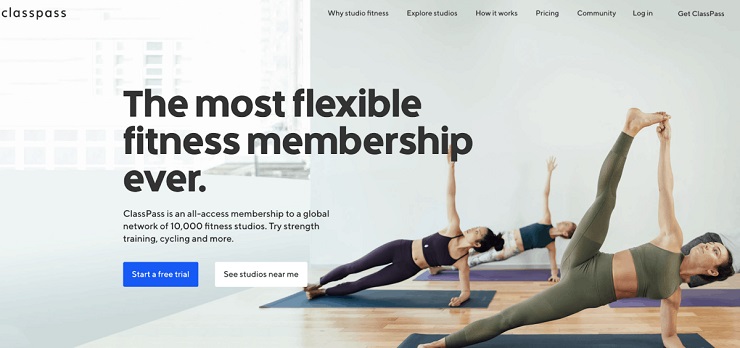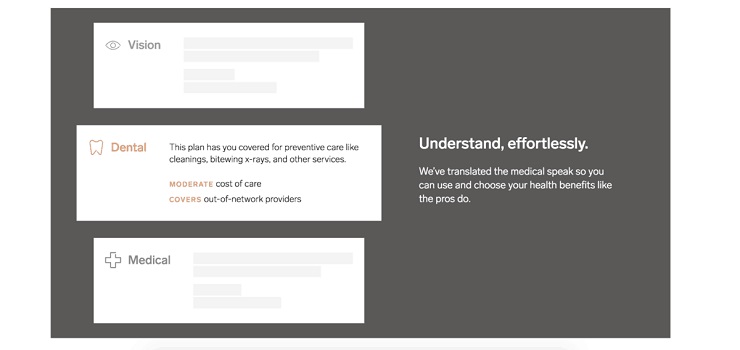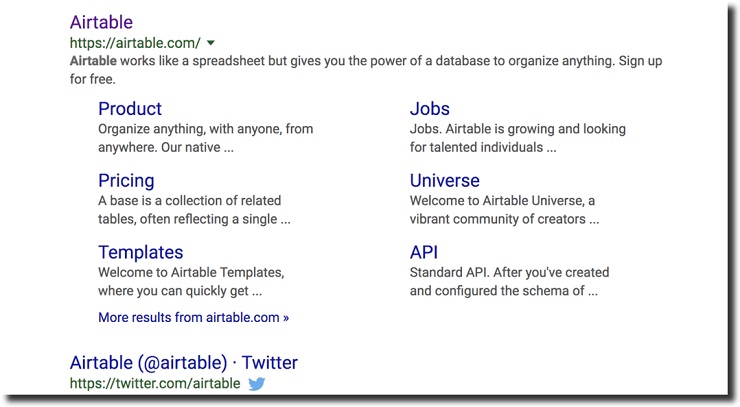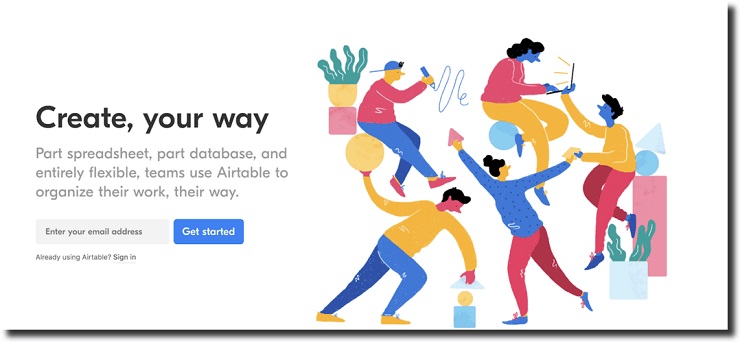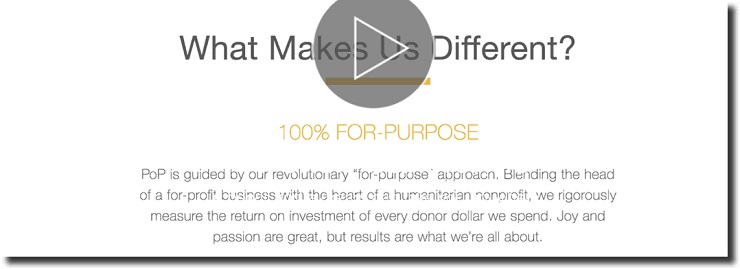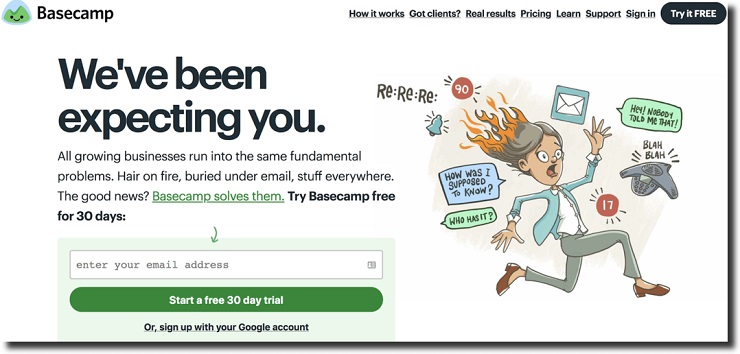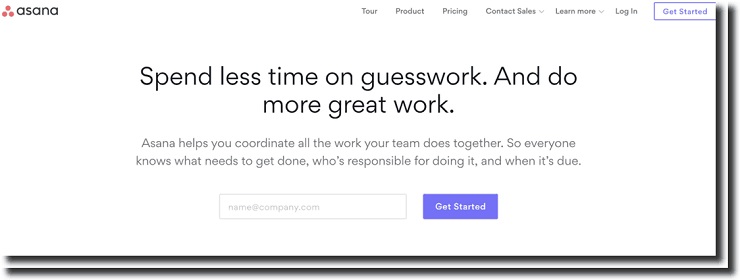You may be trying to solve the wrong problem in your business. What problem might that be? An abnormally long sales cycle? A lack of prospect engagement? Poor customer acquisition?
A failure to get any traction with investors? They all could be symptoms of something bigger.
Each one can certainly sink a business, costing you customers, sales, and profits. And you can definitely make quick fixes to them all with some combination of tactics like funnel optimization, targeted ads, SEO, even a new color palette.
But problems like these, and many others, often indicate that a company is neglecting a much more fundamental issue—an overly complex core message that no one understands, or cares about.
Things like SEO and targeted ads are more like final touches to a remodeled kitchen. You can’t pick out the knobs until you know where the cabinets will be. And your core message is your blueprint.
You’ve got only seconds to capture and keep a VC, client, or customer’s attention, so you need a message that resonates effortlessly. A clear core message empowers customers and investors to make smarter, faster decisions. There’s less resistance and you can move someone to action more quickly.
Unfortunately, clear messaging is hard! That’s why it plagues so many of use, maybe even you.
Let’s demystify the process and collect a few tools to help you find clarity in the murky messaging waters. Here’s how, from conception to editing, you can bring clarity to even the most complex message.
Tip 1: Eavesdrop on Your Customers
You’re struggling to find the “right” message and end up spending hours parsing words and phrases, clicking through thesaurus results, and still getting stuck with the same old lame catchphrases. Does this sound familiar?
You’re making a common mistake, and here’s the biggest secret about a clear core message—it never comes from you.
It comes from your customers.
From their anxieties, pains, aspirations, dreams, and experiences. That’s true even if you don’t have any customers yet.
When you get inside your customer’s head and listen to what they’re saying, and how they’re saying it, you intimately understand what you’re selling and what your message needs to be. And no, this isn’t marketing hogwash—just look at Joanna Wiebe, who saw a 400% conversion increase by quoting a customer’s words in a headline.
Consider this: Bloomlife, a startup medical device company, is selling a sensor that monitors contractions. Here’s how Bloomlife describes the accessibility of the contraction data:
It’s all about being able to share the very individual experience of laboring with your non-pregnant partner. It’s a message rooted in connection and warmth.
Now compare this to what could have been said about the same service:
It certainly isn’t wrong, but this message doesn’t get to the heart of the feature, which is really a bridge-building tool between you and your loved one. Because no one in labor ever lamented about sharing data. So the real message isn’t about the data, it’s about what that data means for your partnership.
How do you eavesdrop on your customers?
The good news is that you don’t need to hire an expensive company to conduct focus groups to find this information. You can start by identifying your target customer and trying each of these methods:
- Talk to them! Whether it’s customer support chats or phone/in-person interviews, nothing beats a conversation. Ideally, you would be able to record it and produce a transcript so you can highlight the words and phrases that they’re actually using.
- Customer surveys: Email your list or follow up with website visitors and ask them to fill out a short survey. Make sure they have enough space to write in their own words. A simple multiple choice won’t get you the content you need. Here’s a great resource on what questions to ask on customer surveys to get the best responses.
- Online reviews: Review mining in places like Amazon, competitor sites, forums (e.g., Reddit, Facebook) are fantastic ways to listen in, a personal favorite. This is a whole article unto itself (check out Joanna Wiebe’s article here), but your basic goal with review mining is to better understand your buyer by pulling out key words and phrases. I often create a word doc, copy and paste reviews inside, and highlight what reviewers (a) are struggling with; (b) want/desire; and (c) any remarkable phrases.
Once you’ve gathered up some data, here’s how to use it:
- Pull out key words and phrases – What’s a memorable turn of phrase? Does a specific word keep coming up again and again? Is there a powerful story shared? What are people commonly struggling with or griping about? Highlight these and start to piece them all together, then…
- Identify patterns – using the data above, see what trends emerge and group them together. You’re rarely going to find a message that fits 100% of the time, so find and listen to the customers who will be the most likely to use (and pay) for your product or service, and finally….
- Build your message in your customer’s language – Now that you know your message, don’t forget to craft it using your customers language—those words and phrases you found. Why? Because you want to engage in the conversation they’re already having.
A great example of this is direct-to-consumer comforter startup, Buffy. A name that rhymes oh-so-perfectly with fluffy. And “fluffy” matters because that’s how buyers talk about comforters they love.
Buffy leaned into this commonly used language, not only with their company name, but also with their hashtag (#buffysofluffy.) And it seems to be working, because there are quite a few instances online of their comforter being described as fluffy.
So go ahead and find a simpler, better message by listening to your customers, wherever they may be.
Click Here To Get Free Instant Access To 28 Proven Marketing Strategies For New Startups!
Tip 2: Find Your ‘One Thing’
Look, I get it. You’ve put in endless hours turbo-loading your product with cutting-edge features.
But the truth is, all of those bells and whistles are messaging clutter. Here’s what Michael Masterson said at AWAI:
“One good idea, clearly and convincingly presented, was better than a dozen so-so ideas strung together.”
A clear, engaging core message is grounded in one key thing. And if you’re doing it right, your customers helped delivered that one thing to you on a silver platter (see Tip 1).
So what does one thing look like in practice? Acuity Scheduling does a great job of crystallizing its one thing—the ease of automating your scheduling. I use Acuity, so I know it has plenty of other features, but when it comes to their core messaging on their homepage, they stick with the most salient and specific benefit—your time.
Or look at ClassPass, which focuses on the flexibility of its program. Not weight-loss or cost savings, both of which are compelling benefits, but they’re introduced later. Instead, ClassPass leans into the core message of flexibility. Plain and simple.
Here’s how to focus on your one thing:
- Know your customer: The more you understand your customer, the more specific your message can be. So all of that material in Tip 1? It’s just as useful when finding that one thing.
- Cut ruthlessly: Go through your messaging with a machete. Cut it to bits until you’re left with a single, clear, core message. Any extra details or flourishes—delete them.
- Segment: If your customer base is too diverse to have one thing for everyone, it’s time to segment. Why? So you can find your one thing for each audience segment. What is segmenting? It is basically dividing your audience up based on traits like age, income, buying patterns, etc. There are tools out there like Right Message that make it easier to target and send the right message to the right segment of people.
Tip 3: Write for a 12-Year-Old
Nothing forces you to get to the heart of an idea faster than trying to explain it to a child. It requires simplification of language and ideas, which is exactly what you need to do to simplify your core message.
I don’t remember much from my days as a lawyer, but I do remember that the best litigators were able to make the most complicated matters seem impossibly simple. And the mantra we were taught? “How would you explain this to a child?”
Even Albert Einstein agreed: “if you can’t explain it simply, you don’t understand it well enough.”
Here’s why. Explaining something to a child forces you to get clear on what’s most important. You can’t hide behind flowery or overly technical language.
So, who’s doing this well? Collective Health, a health benefits administrator, is committed to writing complex insurance jargon so simply that a third grader could understand it all.
This means making notoriously jargon-heavy insurance accessible to anyone. And here’s the best part—Collective Health’s mission is to help employers take control of their healthcare offerings. This means empowering everyone from employees to management to understand the ins and outs of healthcare. So accessibility is paramount.
Spotify is another a great example. Rather than rattling off techy phrases, Spotify’s homepage keeps it simple and straightforward. A kid would get that they could listen to millions of songs for free. That’s it.
Here’s how you write for a 12-year-old:
- Actually write for a child – If you’ve got a kid handy, try it IRL! Otherwise, use your imagination. Try to describe (in writing) your product or service as you would to a child. Where does the story get sticky? Where would a kid get bored? Use this as a barometer for what’s working and what isn’t.
- Measure the sophistication of your prose – Just when you think you’ve got it right, try out Hemingway Editor and see what your grade rating is and where your writing gets overly complex. Readable.io is another great tool. I don’t recommend getting too hung up on these measurements, but software can offer great insight into where you could afford to be more concise.
- Simplify your language – Take out any big words and complex sentences. Just remember, you don’t look smarter when you use big words. Your customers want to get to the point, period.
Click Here To Get Free Instant Access To 28 Proven Marketing Strategies For New Startups!
Tip 4: Lean on What People Already Know
There’s a reason so many founders describe their businesses as “the Uber for X,” or “the Amazon for Y,” despite the fact that those analogies are overused, eye-roll-inducing, satirical fodder.
It’s because these analogies work! According to HBR, analogies make “enormously efficient use of the information and the mental processing power that strategy makers have.” That’s because a strong analogy focuses attention on key pieces of information, forcing others to be ignored or overlooked. And in doing so, they reduce or completely eliminate resistance.
That’s the magic of analogies—they’re superpowered shortcuts to message simplicity.
Why? People are inherently wary of the unknown. So when you’re trying to sell something new or unfamiliar, there needs to be an anchor in what’s comfortable. And that’s what metaphor and analogy do—tether your message to the known.
Take Airtable, a cloud-based collaboration tool, which when written like that, sounds like the least exciting product possible. But they use simple and accessible comparisons to make their product sound much more useful. For example, when you google them, this is what comes up: “Airtable works like a spreadsheet but gives you the power of a database to organize anything.” Here’s what I like about that—the audience can easily reference spreadsheet and databases and know what universe this company is playing in.
It still leaves a lot of questions on the table, like whether this is something I could use. And then, as if Airtable read my mind:
Airtable anchors their product in two well known services, but makes it clear that they are “entirely flexible” to show what really makes them stand out.
Or take Pencils of Promise, which more or less coined an entirely new term for how they operate: “A For-Purpose Organization.” And in a mostly binary world of non-profit and for-profit, Pencils of Promise is offering a new category of operations. But they convey their message by leaning heavily on the existing models that everyone already understands.
Here’s how to leverage the power of comparison:
- Pick a specific feature of your startup to compare – It doesn’t always need to be about your business model. Instead, consider how you can tie in existing points of reference about your operations or product, especially if you are working with something particularly cutting-edge. Or if you were a legal tech startup, you may want to compare the speed at which your software can process documents to the number of associate hours required at a traditional law firm.
- Don’t forget to distinguish yourself – While you work hard to lean on what’s already known, don’t forget to share what makes you and your company unique. I’m sure you’ve got some interesting details to share in your origin story, your product, and your team. Make sure those parts of your story aren’t left on the sidelines.
- Be specific and test it out – A powerful comparison is quick and very specific. You don’t need to drone on about the similarities. if you have an apt comparison at the ready, people will get it. So try out your comparison with a/b testing, or simply by asking a small set of customers (friends work too!) and see how people react. Do they get it immediately? Or is more explanation needed?
Tip 5: Watch Your Language
A quick refresh on why copywriting matters. It basically serves as your online salesperson. Masterful copy educates, persuades, engages, and builds relationships. If you’re doing business online, your copy is often the difference between a website that converts and one that falls flat.
The good news is, there’s a handful of easy-to-apply copywriting “tricks” that anyone can use to simplify their message, even if you’re not a copywriter. And there’s even more here. I think of these as the final sweep for crafting an engaging, effective message.
Toss the Jargon
Remember that a good message is all about clear communication. And industry jargon? It waters down that clarity. So go ahead and throw out those long, industry-specific phrases and replace them with plain language—the way people actually talk to one another. One report found that plain language not only sets you apart from your competition, it leads to increased conversions and loyalty. In your core message, nothing is more critical than clarity.
Atrium, “a better law firm for startups,” does just that when talking about financing. And what I love is that they use the language any founder raising VC money will know well: “your next round.” Rather than talking about “equity and debt financing,” they use terms their audience will easily understand.
Get Specific
Getting specific is one of the most effective ways to help a reader connect the dots and “get” your message. Specificity builds credibility, trust, and is incredibly persuasive. It brings your message to life with precise details and stories. Rover.com offers a specific example that many dog owners can relate to, the surprisingly busy day at work that makes it nearly impossible to walk your dog.
That said, I would suggest that Rover.com amp up the specificity even more here. What about that “last-minute meeting your boss threw on your calendar titled ‘catch-up,’ meanwhile your dog Henry hasn’t been out since you left the house 7 hours ago and all you can think about is Henry uncomfortably pacing by the door, waiting for you to come home.” That’s the power of specificity.
Put the Customer Front and Center
By now, you’ve done the research, listened in, and understood your audience. But too often I see startups centering their message on themselves. How they disrupt, what they offer, etc.
My advice? Flip it to “you”-centered language and “you”-centered thinking. In other words, your message is all about your customer. How will your product/service benefit them? How will it improve their lives? The more regularly you can get into this headspace, the better your copy will be.
If you gotta get something out the door? A quick trick is to Control + F for instances of “we,” “us,” “I,” or “our.” And then flip those sentences to make them customer-centric (you, your) rather than just about you and your company.
Look at how Basecamp does it. It’s all about the customer and their problems.
After you’ve written your copy, scan through it with each of these tips in mind.
So what does it look like when these tricks are applied well? Asana is a great example.
Their homepage checks each of these boxes. Words like “guesswork” and “what needs to get done” are specific and accessible. While their copy is highly focused on the reader, “Asana helps you coordinate.”
Here’s how you leverage copywriting principles:
- Copy and paste this list of checks and keep it somewhere accessible like Evernote or Google Docs:
- Toss the jargon
- Get specific
- Put the customer front and center
- Use these tips after you’ve crafted your message and scan your copy three times with each of these in mind, applying each as you go.
Click Here To Get Free Instant Access To 28 Proven Marketing Strategies For New Startups!
Take a Closer Look at Your Core Message
Now that we’ve talked through some ways to create a clear core message that people will actually care about, how are you feeling about yours? Do you think you’ve been nailing your core message all along? Or are you thinking back to key language you could crystallize better?
Messaging is one of those murky but incredibly important pieces of your business. And if you want more clarity, and more conversions, put these tips into action:
- Eavesdrop on Your Customers
- Find Your “One Thing”
- Write for a 12-year-old
- Lean on What People Already Know
- Watch Your Language
Once your messaging is clear and simple, you’ll have customers whipping out their Amex and investors banging down the door.
What’s your biggest messaging challenge? Share in the comments below and I’ll help out however I can!

